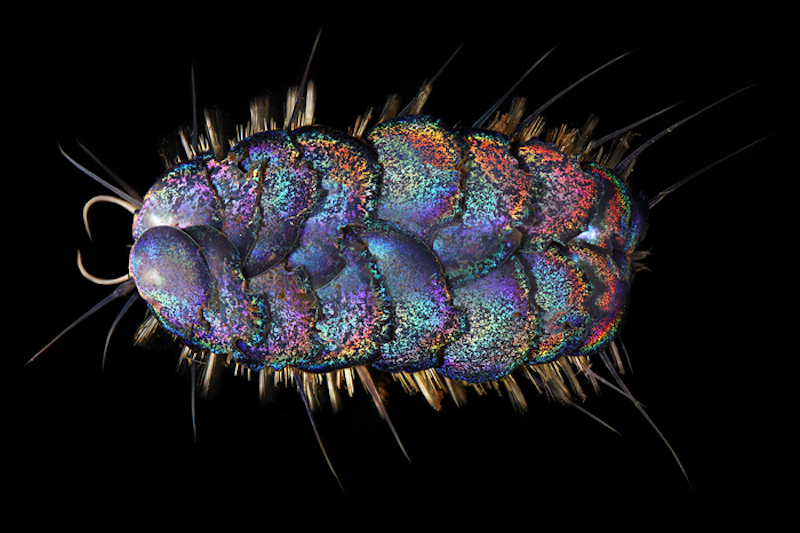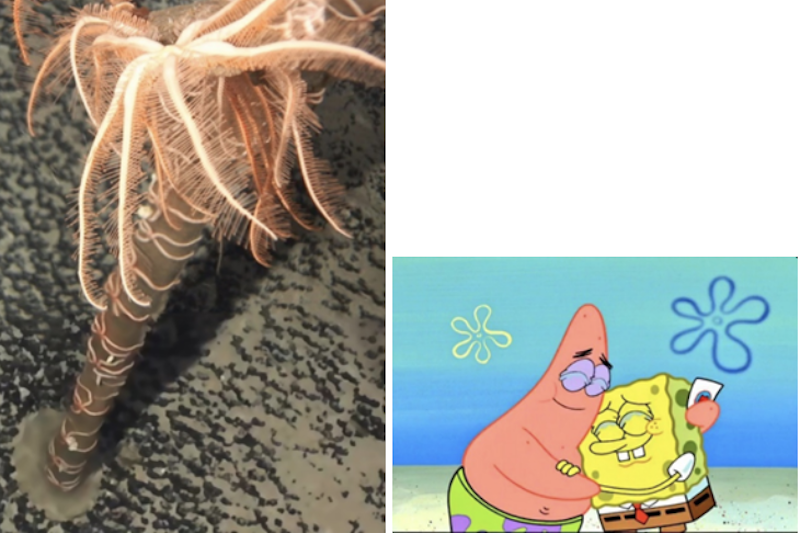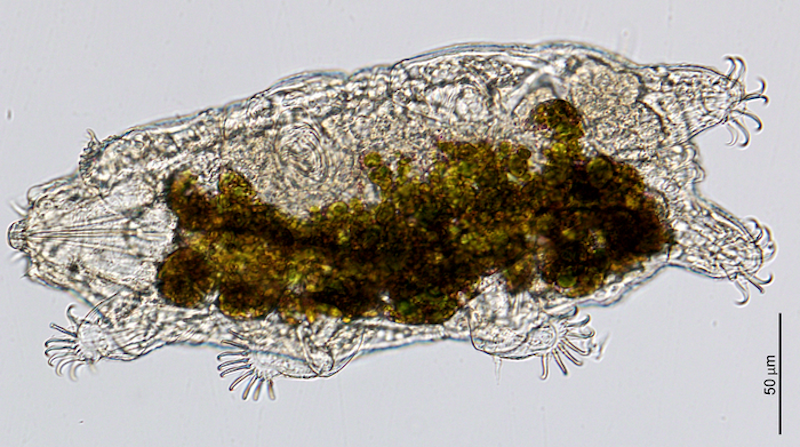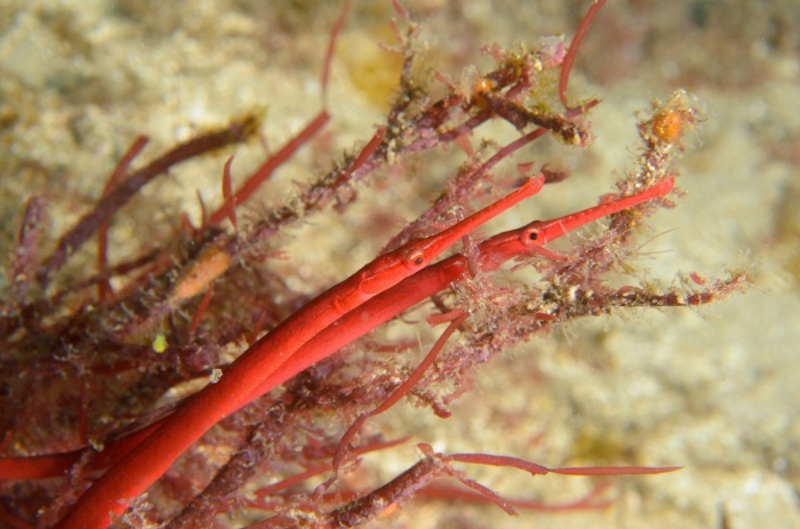
Putting rovers on Mars is exciting, but we must not forget our home planet has never been completely explored. This is especially true of the oceans, which cover about 70 percent of Earth’s surface, yet are still relatively uninvestigated.
I was reminded of this while reading that the World Register of Marine Species (WoRMS) released its annual list of the top 10 new marine species described by researchers during 2020 on March 19, 2021. Here is a summary.
1. The E.T. Sponge is a species of glass sponge that was found on the floor of the Pacific Ocean, over 1 1/4 miles (2 km) down, in a landscape so amazing it was dubbed the Forest of the Weird. The sponge’s round body has two openings looking like eye sockets that suggests the alien head from the movie E.T. the Extra-Terrestrial.

2. The Patrick Sea Star is a new starfish species named after Patrick Star of SpongeBob Squarepants fame. It gained its name because of a close association with a sponge!
3. The Branch-Armed Nostril Copepod is a small crustacean that is parasitic, has branched, root-like arms and lives in the nostrils of a species of skate.
4. The Yellow Sea Slug of Ørland was first noticed by a scuba diver in 2014 in Trondheimsfjorden, one of the largest fjords in Norway.
5. The Giant Plastic Amphipod is a scavenging crustacean that was discovered living 3.75-4 miles below sea level in the Mariana Trench, the deepest part of the ocean. Unfortunately, one of the 11 specimens was found to have microplastic in its digestive tract, the first time plastic has been documented in a new species.
6. Haffi’s Upside-Down Tapeworm, like other tapeworms, has no digestive tract. But unlike most other tapeworms, it has only a simple suction cup structure at its head-end and a complex, flower-shaped adhesive organ, called a rosette, at its tail, thus looking like it’s upside down.
7. The Beautiful Branching Bryozoan is a type of colonial invertebrate that lives in aquatic environments worldwide and can take several different forms.

Image via WoRMS.
8. The Tree-of-Life Tardigrade belongs to a group of microscopic animals, also known as water bears, that is famous for the ability to survive extreme conditions.
9. The Feisty Elvis Worm is a type of scale worm that gets its name from scales resembling the sequins on Elvis’ show attire and a feisty temperament.

Image via WoRMS.
10. Red Wide-Bodied Pipefish sports clever camouflage to hide among red algae and sponges.
The 2020 group is quite an addition to the world’s biosphere! For all the details, see “Top 10 New Marine Species” at https://earthsky.org/earth/top-10-new-marine-species-2020? .
